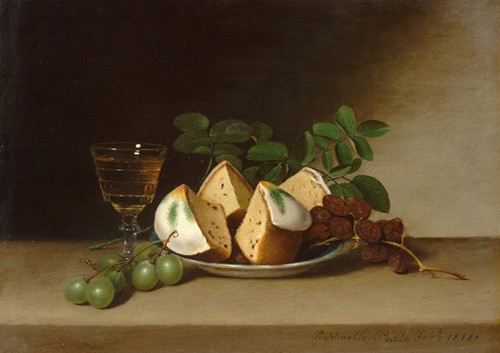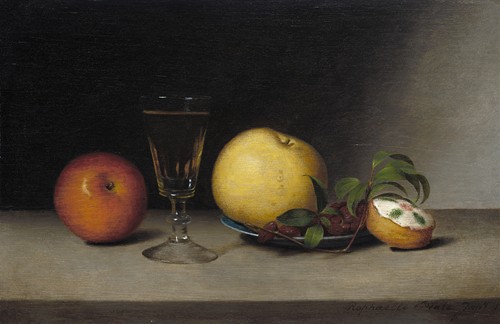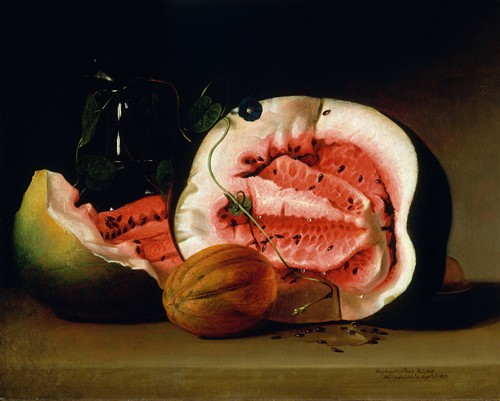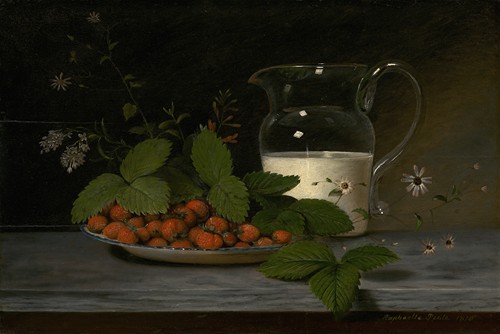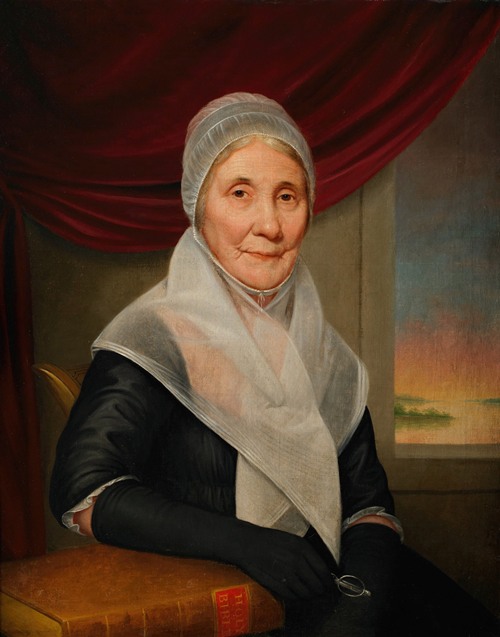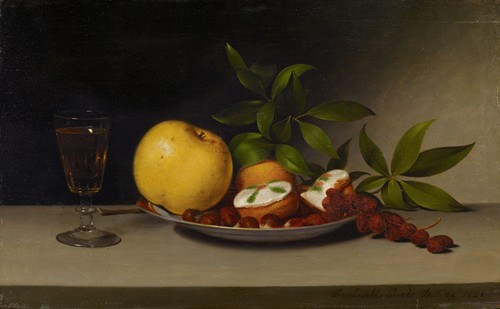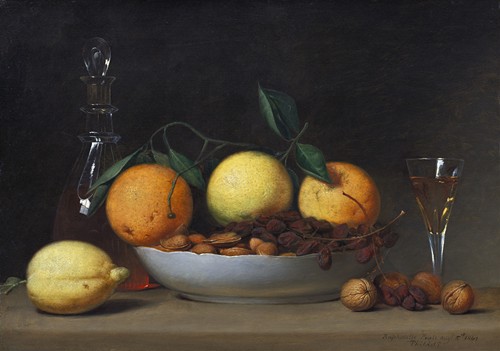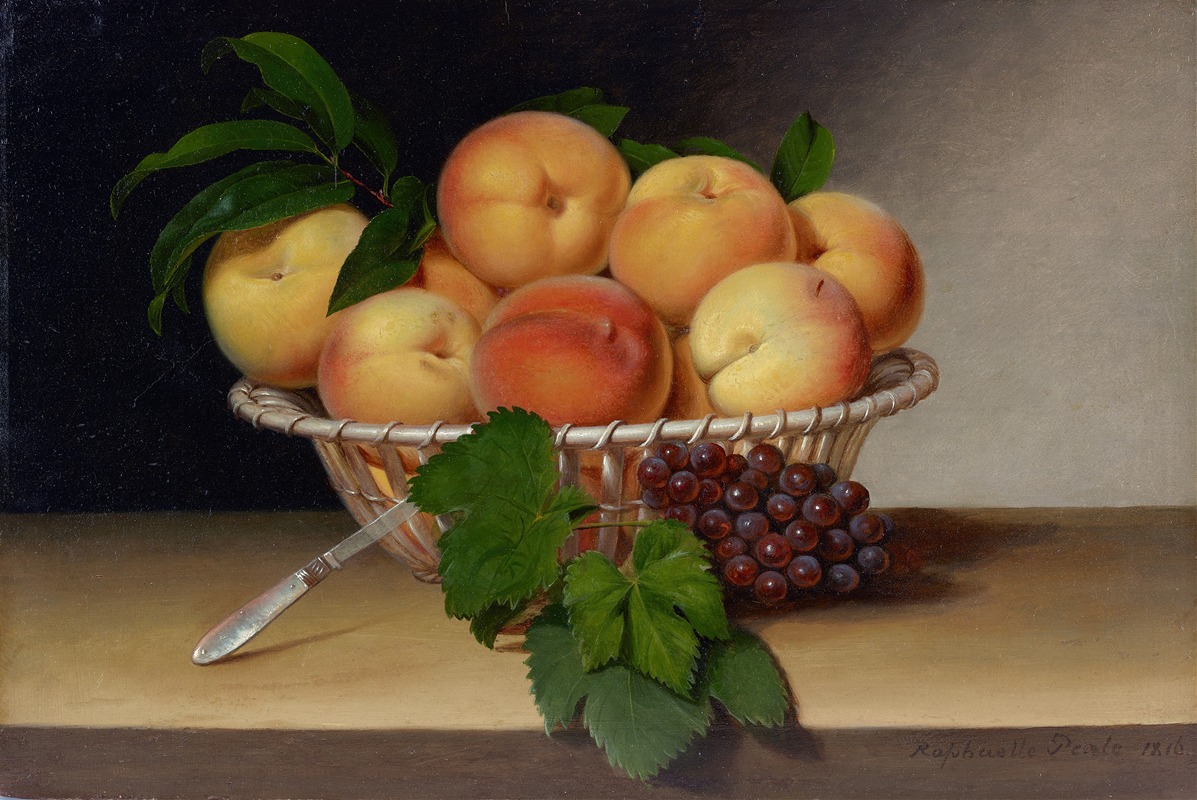
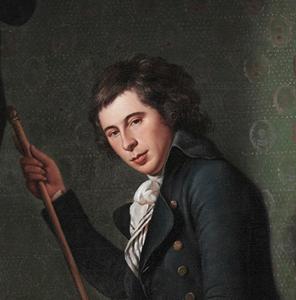
Raphaelle Peale is considered the first professional American painter of still-life.
Peale was born in Annapolis, Maryland, the fifth child, though eldest surviving, of the painter Charles Willson Peale and his first wife Rachel Brewer. He grew up in Philadelphia, and spent his life there in a home at the corner of 3rd and Lombard. Like his siblings (almost all of whom were named after famous artists or scientists), Raphaelle was trained by his father as an artist. Early in his career, the pair collaborated on portraits. On some commissions, Raphaelle painted miniatures while his brother, Rembrandt, painted full-size portraits.
In 1793, he made a trip to South America in order to collect specimens for the Peale Museum founded by his father. He exhibited five portraits and eight other paintings, probably still lifes, at the Columbianum, Philadelphia in 1794. His first professional exhibition was in 1795 at the age of 21. In 1797, with his brother Rembrandt, he traveled to Charleston, South Carolina, where they attempted to establish another museum. The plan fell through, however, and Raphaelle returned to painting miniatures.
He married Martha (Patty) McGlathery at the age of twenty, and with her had eight children. For about two years beginning in 1803, Peale toured Virginia with the "physiognotrace", a profile making machine, with which he was briefly successful. By 1806 he had begun to suffer the symptoms of arsenic and mercury poisoning brought on by his work as a taxidermist in his father's museum. In August 1809 he was hospitalized with delirium, and for the rest of his life he suffered debilitating attacks almost yearly—which his father ascribed to "gout of the stomach" caused by consumption of pickles and excessive drinking. From 1810, Peale concentrated on still-life painting almost exclusively, becoming America's first professional still-life painter, and he exhibited frequently at the Pennsylvania Academy of the Fine Arts and elsewhere, especially from 1814 to 1818. By 1813, he was unable to walk without crutches. After the downturn in his health, in an era when most artists considered still life a subject worthy only of amateurs, he devoted himself almost exclusively to still life painting. It is for these works he is best known. His work was on frequent exhibit at the Pennsylvania Academy of the Fine Arts between 1814 and 1818. After reportedly indulging in a night of heavy drinking, his health destroyed, he died on March 4, 1825, at age 51 at his home in Philadelphia.

